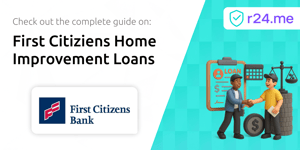
In 2025, many are trapped in cycles of poor financial behavior. With lingering high inflation and interest rates, even disciplined earners feel the pressure. Nearly 89% of Americans failed to reach all their financial goals in 2024, while 51% admitted to savings goals falling far short and 31% confessed to thoughtless spending habits.
This guide offers an authoritative roadmap to break those habits, rebuild your finances, and sustain change for the long haul.
Self-awareness is the first step in reform. Many of us underestimate how daily choices add up over weeks and months. Recognizing personal pitfalls helps you target specific behaviors and reclaim control.
Understanding the true toll of these habits motivates change. The average American carries around $8,000 in credit card debt at rates exceeding 20%, leading to prolonged debt and higher interest costs. Meanwhile, impulsive decisions prevent building an emergency fund or retirement nest egg.
Beyond debt, lifestyle adjustments can produce surprising savings. A “No Buy” challenge can yield thousands of dollars freed for essentials or investments.
Financial behaviors are driven by psychology. Stress, boredom, or environmental cues—like flashing sale notifications—can trigger impulsive buys. Our brains reward immediate gratification over long-term gain.
Generational factors also play a role. Gen X often neglects retirement savings while chasing high-risk assets like cryptocurrency. Boomers may lean on credit when cash runs low, accumulating expensive debt.
Financial literacy is the cornerstone of reform. Alarmingly, 59% of Americans cannot define APR. Without understanding interest, fees, or compounding, it’s easy to fall into costly traps.
Seek trusted resources—books, workshops, or apps—to learn essentials such as budgeting, debt strategies, and interest rate management. Enlist family or financial professionals for guidance as needed.
A robust budget curbs excess and allocates resources wisely. Two popular frameworks help organize income:
Digital budgeting apps offer real-time tracking, automated categorization, and alerts. Automate bill payments and transfers to savings accounts to build consistency and reduce the risk of missed deadlines.
Eliminate high-interest obligations using targeted strategies. The avalanche method prioritizes the highest rates first, while the snowball method tackles the smallest balances to build momentum.
Consider negotiating rates with creditors, consolidating balances into lower-interest products, or using home equity lines if appropriate. But remember, consolidation without behavior change merely shifts the problem.
Retirement planning requires realistic targets. Traditional advice suggests replacing 80% of pre-retirement income, though aiming for full income replacement—minus ongoing contributions—provides greater security.
Include projected health care expenses and long-term care costs. Use online calculators to model scenarios and adjust contributions accordingly. Automate contributions to 401(k) or IRA accounts whenever possible.
Maintaining progress demands community and support. Share goals with friends or join financial accountability groups. Regular check-ins, whether monthly or quarterly, reinforce commitment.
Challenge yourself with “No Buy” experiments or savings sprints. Track your wins—no matter how small—and celebrate milestones to stay inspired through inevitable setbacks.
“It’s never too late to start making a change,” says a leading financial coach. “Even if you’ve stumbled before, each day offers a fresh opportunity.”
Persistent high inflation and shifting economic conditions will test every plan. Adapt strategies as markets evolve. Periodically revisit your budget, reassess goals, and refine your approach to ensure resilience.
Breaking bad money habits demands effort, patience, and continuous learning. By building financial literacy, setting clear goals, and enlisting support, you can transform your relationship with money and secure lasting freedom.
References













